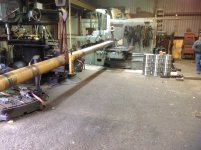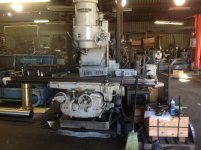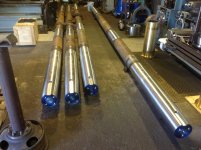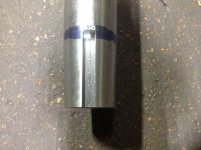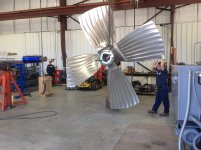jackie schmidt
New member
I thought some of you might find this interesting.
We are building two new Propellars Shafts for one of the big Bolivar Ferrys in Galveston. They are 39 ft long, 10inch in diameter.
Here is how we cut the keyseats in the coupling end, and the Prop end. Both keyseats are in a taper at 1 inch in 12 inches.
As you can see, the overhead crane takes all of the weight, the Mill pulls it along as it cuts.
http://benchrest.com/attachment.php?attachmentid=18904&stc=1&d=1485616159
http://benchrest.com/attachment.php?attachmentid=18905&stc=1&d=1485616204
http://benchrest.com/attachment.php?attachmentid=18907&stc=1&d=1485616257
We are building two new Propellars Shafts for one of the big Bolivar Ferrys in Galveston. They are 39 ft long, 10inch in diameter.
Here is how we cut the keyseats in the coupling end, and the Prop end. Both keyseats are in a taper at 1 inch in 12 inches.
As you can see, the overhead crane takes all of the weight, the Mill pulls it along as it cuts.
http://benchrest.com/attachment.php?attachmentid=18904&stc=1&d=1485616159
http://benchrest.com/attachment.php?attachmentid=18905&stc=1&d=1485616204
http://benchrest.com/attachment.php?attachmentid=18907&stc=1&d=1485616257



